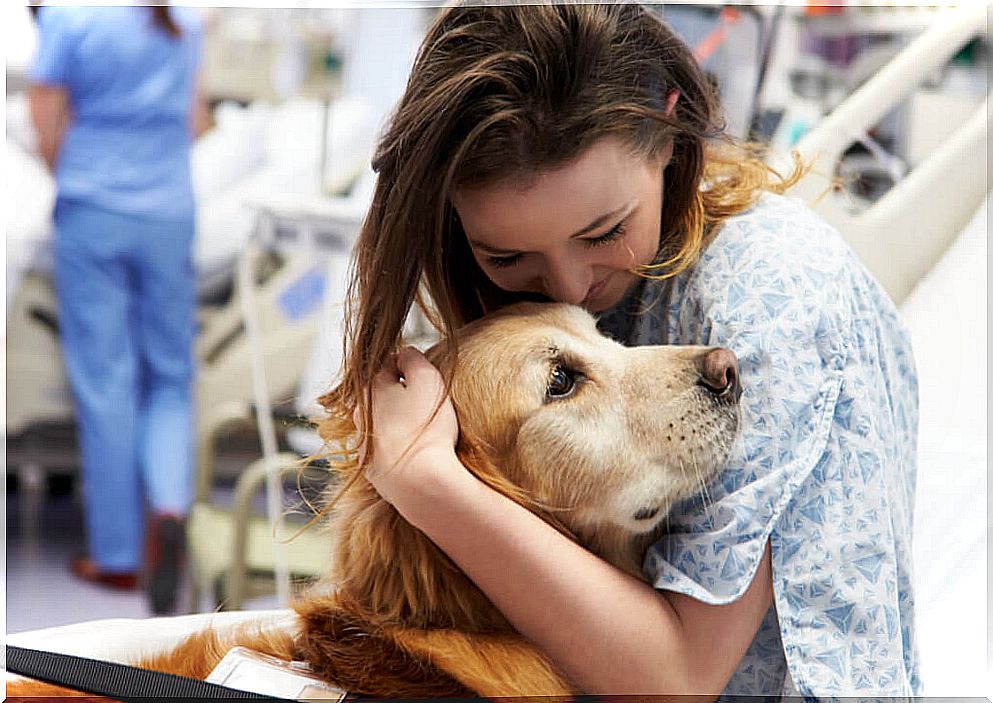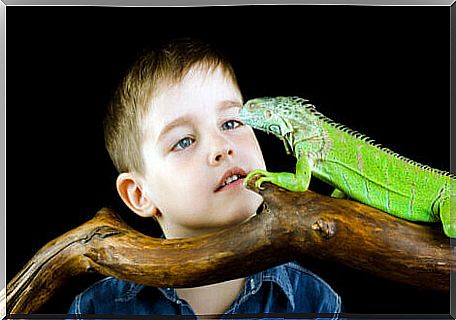The Effects Of Animal Therapy On Humans

Every day, more is said about the link between living beings and the effects of animal therapy on people and animals, especially in the medical field. This allows us to remember the connection and relationship between human beings and different animal species.
Fortunately, the positive effect of animals on people suffering from different diseases is known, but you may be surprised by some examples. Read on if you want to discover the relationship between a patient’s health and their interaction with the animal kingdom.
Animal Therapy Effects: The Amazing Animals That Help Children With Anxiety
At the end of 2020, a news item was published that reports the positive effect that animals have on humans. Specifically, news sources mention the HigglePetsCIC association.
This association helps children to deal with problems such as anxiety. For this, the professionals count on the invaluable help of a varied group of animals, which are a great support for children.
The first animals that come to mind when talking about therapies may be horses or dolphins. However, this association works with different taxa, such as reptiles, turtles or snails.
Some of the children who participate in the association have special educational needs. This means that sometimes it is not easy for them to relate to human beings.
Likewise, regardless of whether the child is affectionate or finds it difficult to express their emotions, at the end of the treatment they change. The little ones develop a bond with the animals and, together with a therapist, begin to face their problems.

What is the effect of animals on children?
The presence of animals in these therapies allows children to work on themselves. Specifically, they help them gain confidence and build their self-esteem, among other qualities.
However, working with animals doesn’t just benefit children with anxiety or special needs. In the aforementioned news, several examples are also mentioned that allow us to really understand the benefit of animals to people.
Thus, animals help children to open up to tell their problems. After talking about what worries them, they gain positive reinforcement, which is also stimulated by the endorphins secreted from the animals.
animal therapy
10,000 years ago, the domestication process transformed the relationship between humans and animals. This meant a series of changes for both the human being and the living beings around him.
Domestication led to social and economic transformations for humans, but animals were also affected in aspects such as their anatomy, physiology and behavior. Today’s domestic species have little to do with their wild ancestors.
The contribution of animals to human health has been numerous throughout history. Their role ranges from the creation of clothing to medical aspects, such as the synthesis of insulin in pigs. One of the best known examples is the participation of various animal models in vaccine development.
Does this therapy have scientific proof?
In addition to belief, different studies have shown the impact of animals on human health. The relationship between patients with cardiovascular disease and the positive effect of their pets on their heart disease was one of the first relevant observations.
Thus, animal-assisted therapy can be considered an interesting treatment. Mainly, it has been shown to be effective in people with physical, emotional or cognitive problems.
What are its benefits?
Positive effects of animal therapy have also been reported in a high percentage of patients. Among them, we find the following:
- The animal acts as a distraction or entertainment as it generates happiness.
- The living being allows the child to feel at home, with the sensations of comfort and security that this implies.
- Children can cuddle up with animals, an act that reduces anxiety.
- Non-human living beings are a different company.
- Paying attention to an animal can lessen or alleviate physical and emotional pain.
Which animals are part of animal therapy?
Dogs and cats are great protagonists of animal therapy, although canine therapy is better known than feline therapy. However, horses or dolphins also play important roles in this theme.
Depending on the animal that takes part in the therapy, it will be named in one way or another. This is the case of therapy with horses, or hippotherapy, for example.
Hippotherapy produced positive results in motor and verbal levels in people with autism or Down syndrome. In addition, this therapy helped children victims of gender violence.
Is it only applicable for children?
In short, the presence of animals in medical and psychological treatments is not only beneficial to children. Positive results were registered in the participation of adults and elderly in animal therapy.
In the different therapies with animals, some shared behaviors were noticed. For example, the presence of the animal reduces anxiety and generates happiness, a fact that allows it to act as a distraction for the human being.
It is not only animal therapy that influences the patient’s health, but also pets, since they act on an emotional or psychological plane and provide physical and social benefits in the individual’s daily life. For example, pets require daily exercise, which means the tutor will also have to perform physical activities.
 We can conclude that the effects of animal therapy are positive both in children and in adults and the elderly. In addition, its benefits have important scientific support.
We can conclude that the effects of animal therapy are positive both in children and in adults and the elderly. In addition, its benefits have important scientific support.
Therefore, it is in our hands to ensure the protection of the animals and to help them. In this way, we will maintain this symbiotic relationship that is so beneficial to both components.









